Fermented Garlic Scapes is a fantastic and delicious way to preserve extra garlic scapes for use in your meal preparations all year long.

This post contains affiliate links. As an Amazon affiliate, I make a small commission at no extra cost to you if you make a qualifying purchase. See my full disclosure here.
Do you have extra garlic scapes from your garden? Or maybe you found them at the farmer’s market or in your CSA box. In this recipe we’ll be making fermented garlic scapes that will stay tasty in your refrigerator for a year or more (over 2 years in my root cellar). I’m sure you’ll agree that fermenting is the best way to preserve your vegetables.
They will be ready to use when you need them, just remove what you need and keep the rest for another day. You’ll preserve all the nutrients of the scapes, but that’s not all. Fermenting will increase these nutrients and make them more bioavailable. It will also add gut-healthy probiotics. Pretty awesome, right?! Let’s get it done!
If you love fermented foods, try my fermented garlic paste, made from the garlic cloves. And you’ve got to also try my tasty fermented onions. Make a delicious fermented salad, tabouli salad! For your surplus of cherry tomatoes (or big tomatoes), use my fermented cherry tomato recipe. Oh, and be sure to make some delicious fermented salsa!
Fermented Garlic Scapes

Do you grow your own garlic? If you grow any of the hardneck garlic varieties, you’ll be blessed with garlic scapes around the middle of May to June, depending on your climate. Softneck garlic does not make scapes.
Fall planted hardneck garlic will naturally try to go to seed in spring. This is why they grow bulbs, to store energy so they can spend on making seeds. However, if you’re growing garlic for big bulbs, these flower stalks must be removed to force the garlic to put its energy into growing bigger bulbs that you can store.
So what to do with a pile of these garlic scapes? There are many things you can do with garlic scapes. Get lots of ideas and recipes to use them, including a delicious pesto, in my article What to make with garlic scapes and bolted onions.
Today we’ll be fermenting these wonderful ‘discards’ from the garlic growing operation. They deserve to be highly regarded as a delicacy in my opinion.
Fermentation adds so many benefits to your foods. Read more about that in my article on fermented vegetables, which also contains master lists for fermenting any vegetables.
There are so many reasons to love fermented garlic scapes. Here are some to start, but I’m sure you’ll find more once you make them:
Why you’ll love fermented garlic scapes:
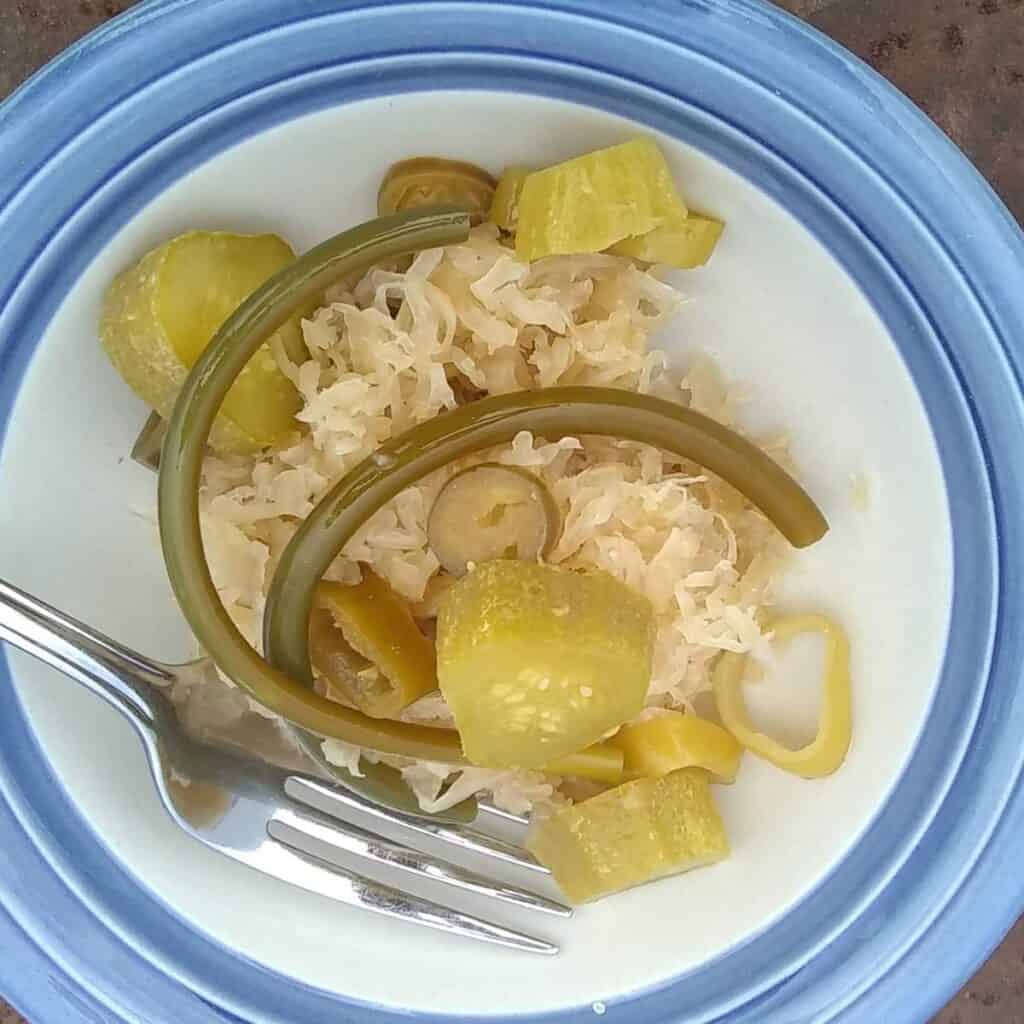
- You can use them fresh for a delicious probiotic snack.
- Try chopping and mixing some into your potato or macaroni salad. Not only will it add some crunch, but your potato salad will get added flavor when you mix a splash of the brine into the dressing.
- You will love chopped, fermented garlic scapes mixed with freshly homemade chevre, strained bonny clabber, quark cheese, or store-bought cream cheese, cottage cheese or Greek yogurt for a dip or spread. Add some fermented chili paste or fresh chilies, and herbs. Spread on a slice of toasted sourdough bread or crackers. Ridiculously tasty!
- Fermenting is a great way to preserve garlic scapes, which have a very short season, for year round use.
- And you will love the convenience of having them all ready to use when you need them remove what you need and put the rest back for another day.
- You’ll love the tangy fermented flavor.
- You’ll get added nutrients and probiotics that develop during the fermentation.
- Fermented garlic scapes will help with your digestion, balance your gut’s microbiome and help support your immune system.
- They make a great topping on salads or sandwiches, and you can cook with them too.
- They are super quick and easy to make in just a few minutes.
- Garlic is so good for your health! Learn about garlic benefits here.
Make Fermented Garlic Scapes
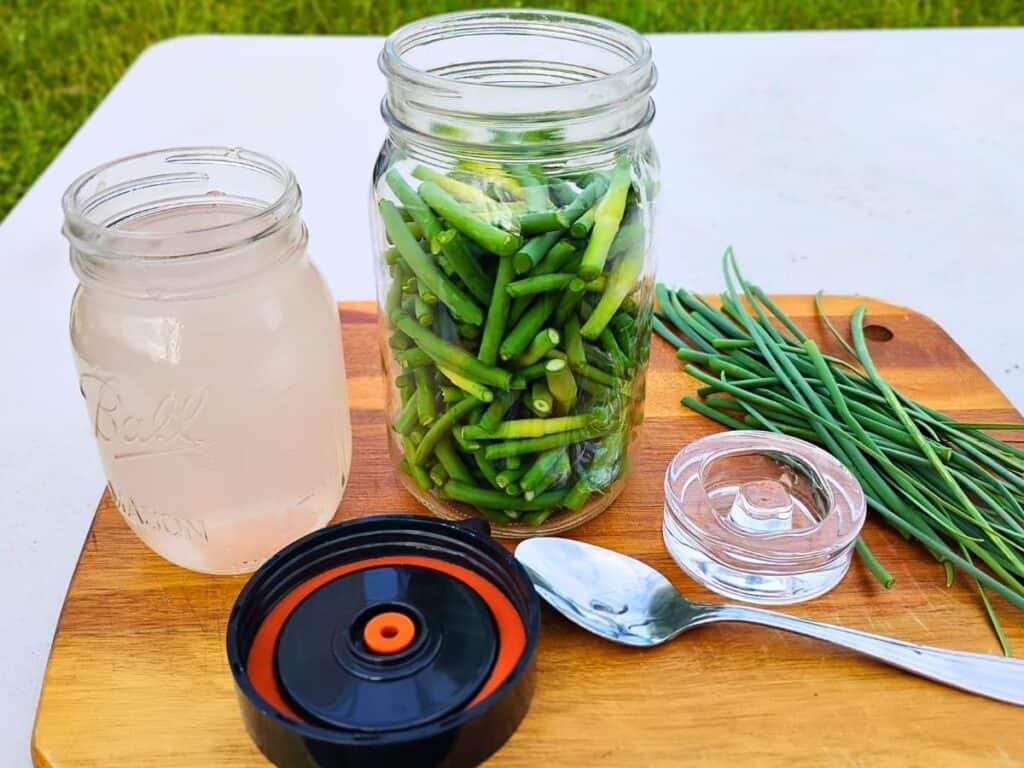
So I bet you’re eager to get started already!
Equipment
2 mason jars– One wide mouth quart sized jar for fermenting and one pint jar to mix your brine. You can also use a hinged top Bormioli Fido jar to ferment in.
Fermentation weight – I recommend you use a glass fermentation weight. They are made for this job and do it well! If you don’t have one, use a clean, boiled rock, a baggie filled with brine, or some other food-save, non-corrosive item you have on hand, that will keep the ingredients submerged in the brine.
Fermentation lid – Another tool that I cannot recommend highly enough. A fermentation top or airlock lid makes fermentation so easy and maintenance-free. However, as with most things, you can substitute. You can either just use a cloth, secured with a rubber band, or a 2-piece canning lid, or a plastic lid that is made to fit the jar.
Keep in mind that if your lid has a seal, you’ll need to burp it once a day to let any pressure from gasses escape.
With non-sealing lids, keep an eye on your ferment. If there are any floaters that could grow mold, push them back under the weight, or if there is a thin layer of greyish-white, wrinkled kahm yeast, skim it off. It could taint the taste of your ferment even though it is not harmful.
If you’re using a hinged-top glass jar, it will self-vent.
Chopping board and knife – use these to chop your garlic scapes. You can also ferment the garlic scapes whole if you prefer, after clipping off the fibrous spikes.
Wide mouth Funnel (optional) – A wide mouth funnel is not necessary, but very helpful. It helps to get your ingredients into your jar easily and without a mess (or less mess, if you’re like me).
Ingredients
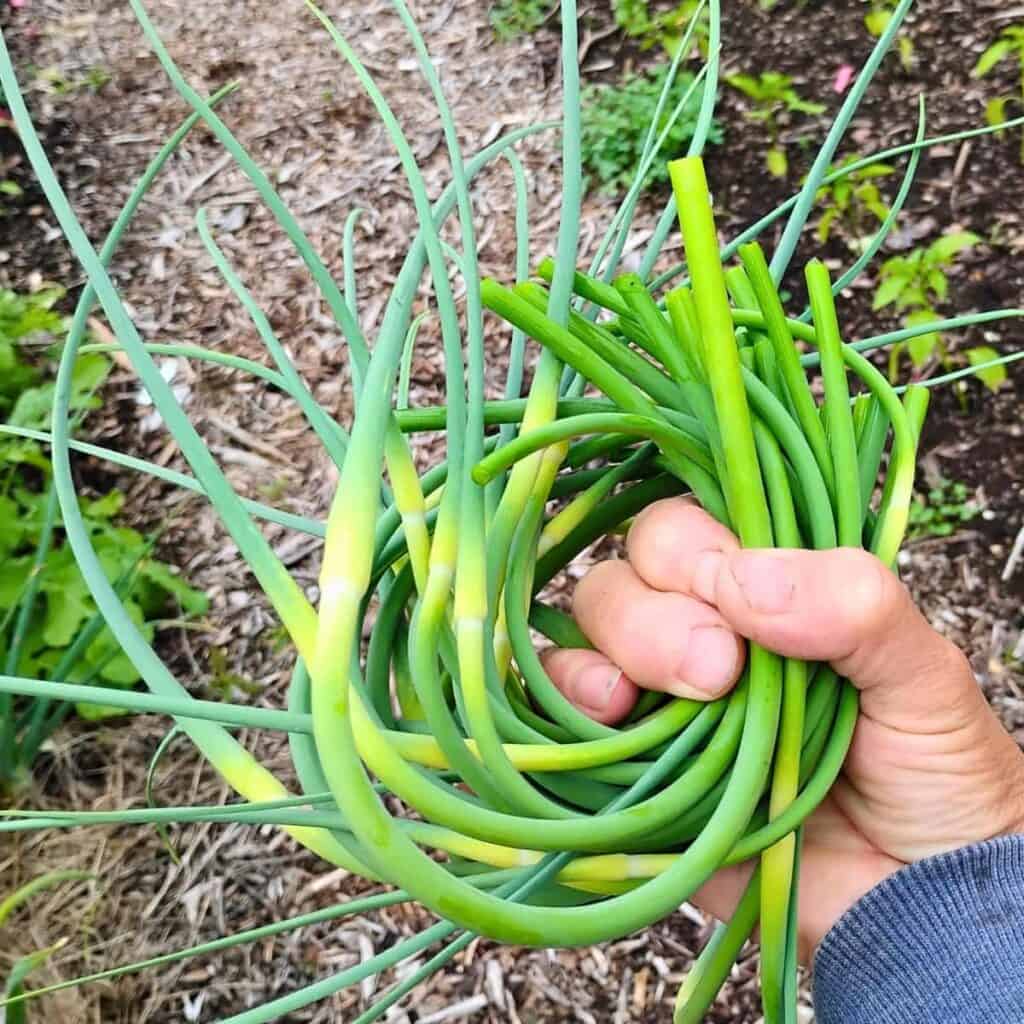
Garlic scapes – Use your own if you grow hardneck garlic or you can sometimes source them at farmer’s markets (May to mid June depending on your location). They are often part of CSA distributions as well.
Sea salt – I recommend Redmond’s Real Salt, Himalayan pink salt, or Celtic sea salt. They add valuable minerals to your diet that are absent in many other salts. You can also use unrefined sea salt or pickling salt. In any case, be watchful of additives. Table salt and even some brands of sea salt and kosher salt can contain additives, so check the box label.
Filtered water – I use stored well water or rain water that I filter with my Berkey water filter. Don’t use straight municipal tap water. The chlorine and other additives can kill your fermentation bacteria. However, you can boil and cool it uncovered or leave it uncovered on your counter for 24 hours, to evaporate the chlorine. Filtered bottled water would be ok to use too.
Pickling Spices (optional) – You can use a premixed pickling spice, about a tablespoon per quart. Or just add what you have, coriander, black pepper corn, allspice, dill seed, celery seed, mustard seed, hot pepper flakes, sliced turmeric or ginger, or fresh dill sprigs.
Steps To Make Fermented Garlic Scapes
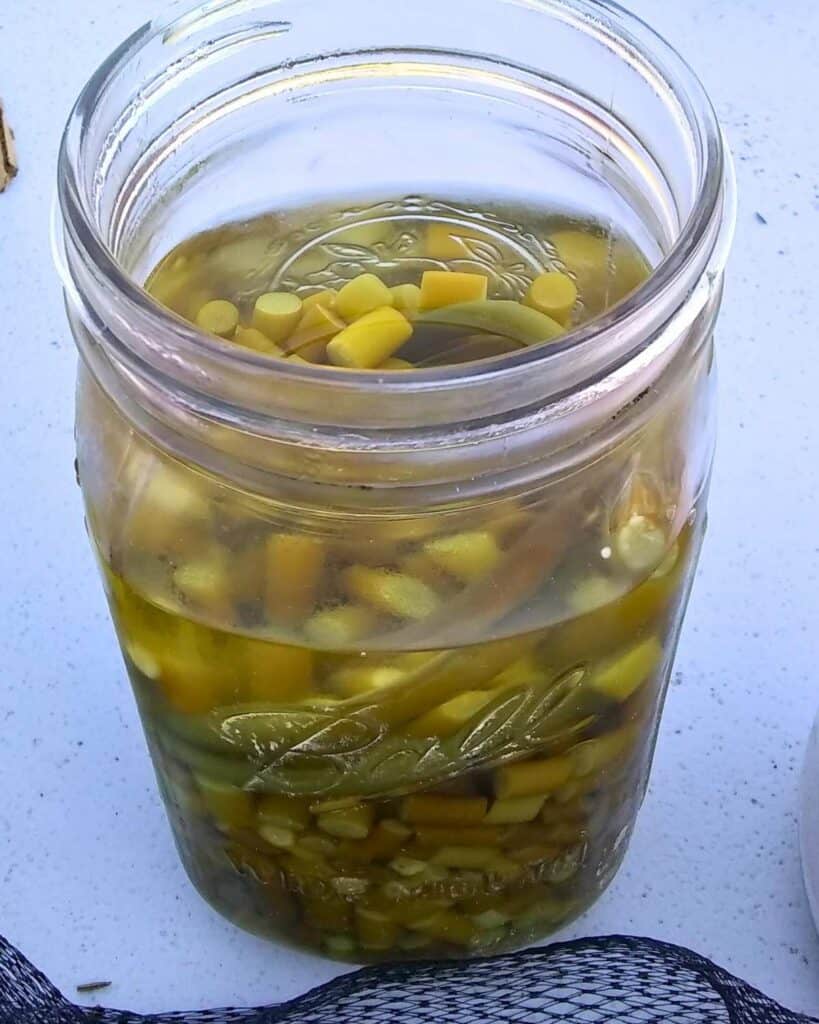
01. Prepare the Garlic Scapes

First, remove the fibrous tips from your scapes, cut them off just above the flower bulb. You can remove the flower bulb too if you prefer, they can get soft during fermentation.
Chop the scapes, cut them into sections or leave them whole.
02. Fill your jar
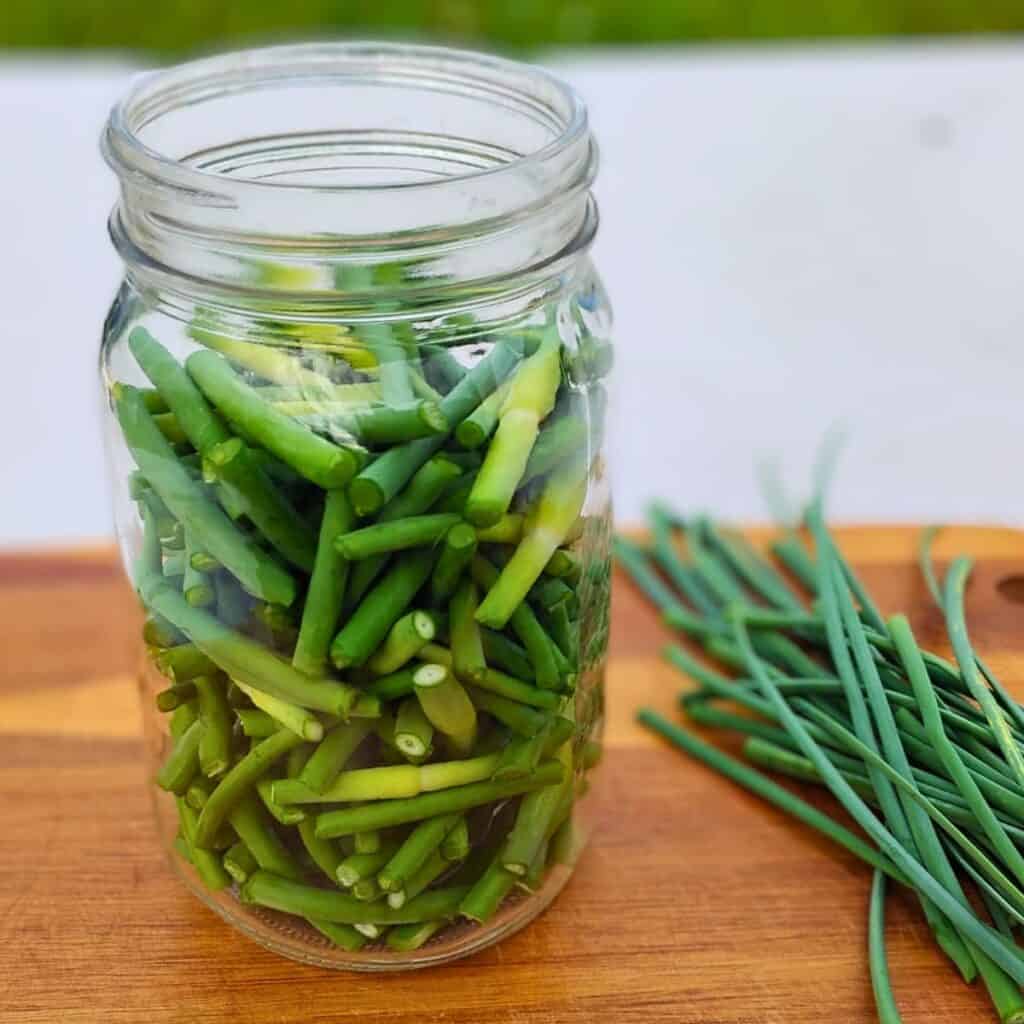
Pack the pieces into your mason jar. It should be near full, to about an inch below the rim. They will compress a bit more once you add your weight.
03. Make your brine
Add the salt to the water in a separate jar. You’ll probably need about a pint of it. Stir or shake well to dissolve the salt.
04. Add the brine to your Garlic Scapes

Pour the brine over the garlic scapes. They need to be submerged. If you have leftover brine, you can save it for another ferment or use it in your next soup or bread dough instead of salt.
05. Weigh down your Garlic scapes
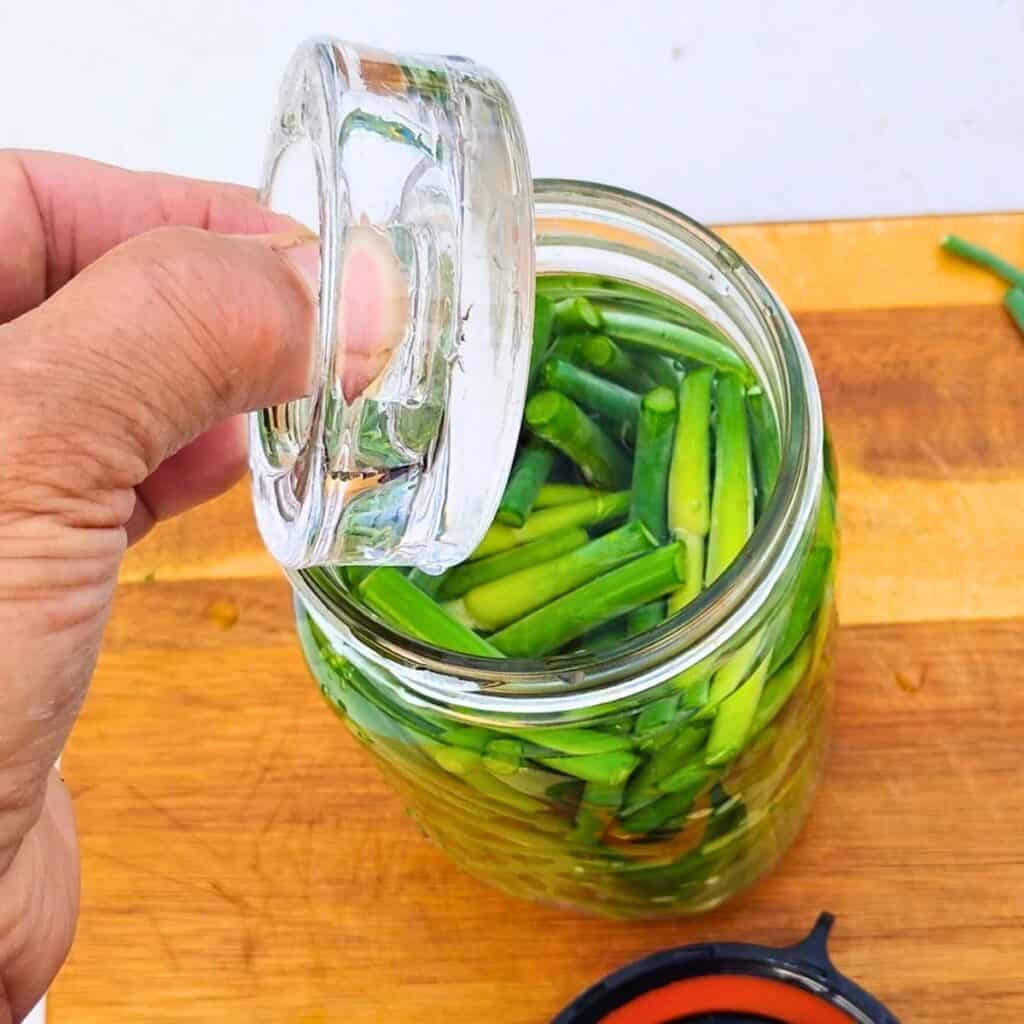
Place a glass fermentation weight on your garlic scapes. If you don’t have one, you can use a boiled, clean rock, a baggie filled with marbles or brine, or some other food-save, non-corrosive item you have on hand.
06. Cover your jar
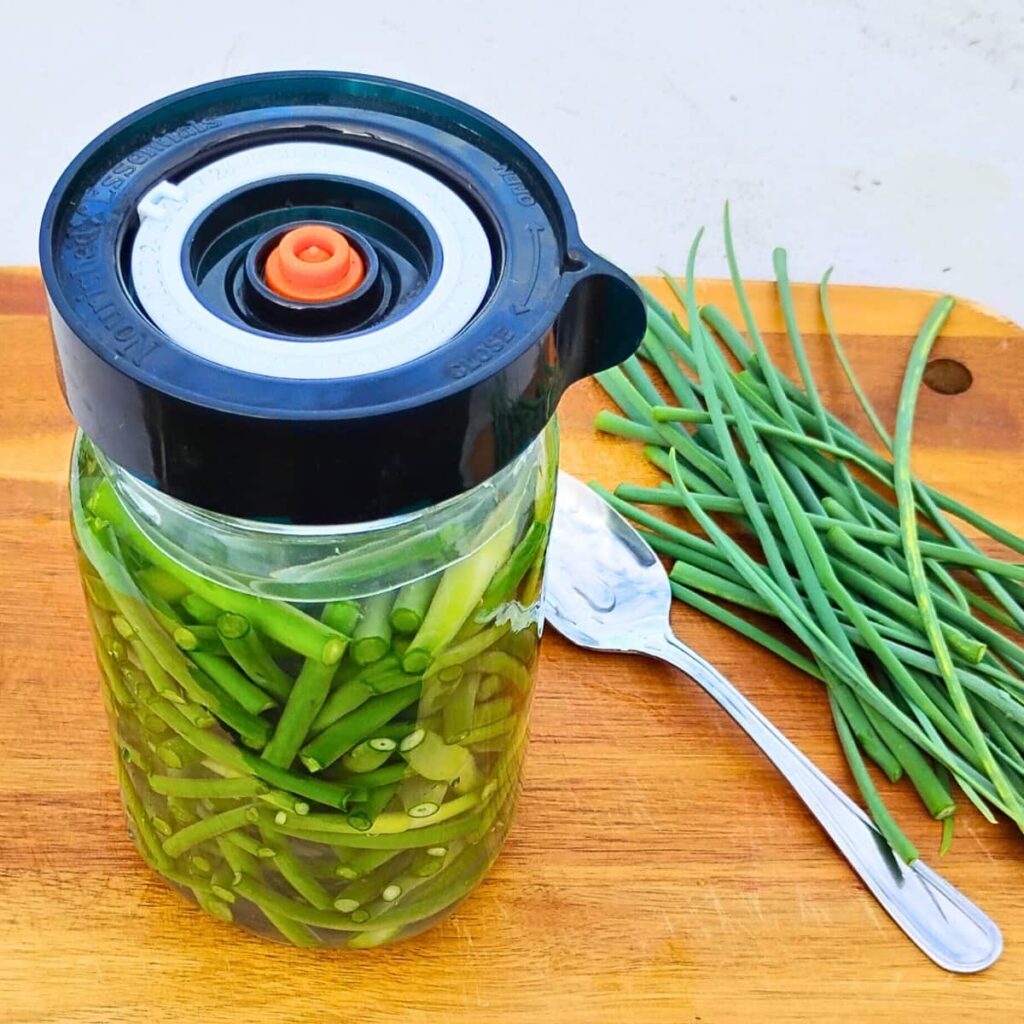
If you are using a mason jar, I highly recommend a fermentation lid or airlock. They are self venting and are so easy to use. No maintenance necessary. If you don’t have one, you can use a 2-piece mason jar lid. But you’ll need to remember to burp the jar once a day.
Or you can try to screw the band on very loose, so it can self vent. Without a fermentation lid, be sure to keep an eye on the fermentation to see if a yeast layer forms on top, which is harmless, but should be skimmed off or it can give your fermentation an off-flavor.
07. Fermentation
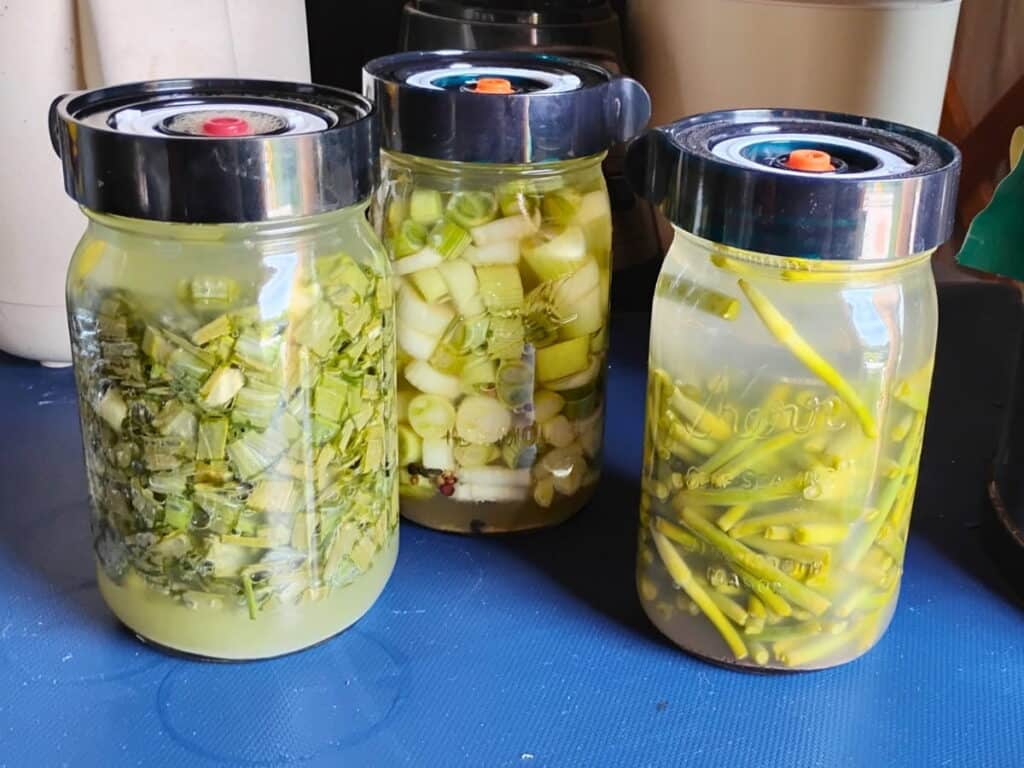
Place your jar in a dark place with a bowl under it, at about 70-85 ℉. This temperature should be maintained over the course of the next 3 weeks. Some fluctuation is fine, but avoid prolonged lower or higher temperatures. For more details on fermenting and why this is important, visit my lacto-fermented vegetables page, a beginner course on fermenting.
08. Check your fermentation
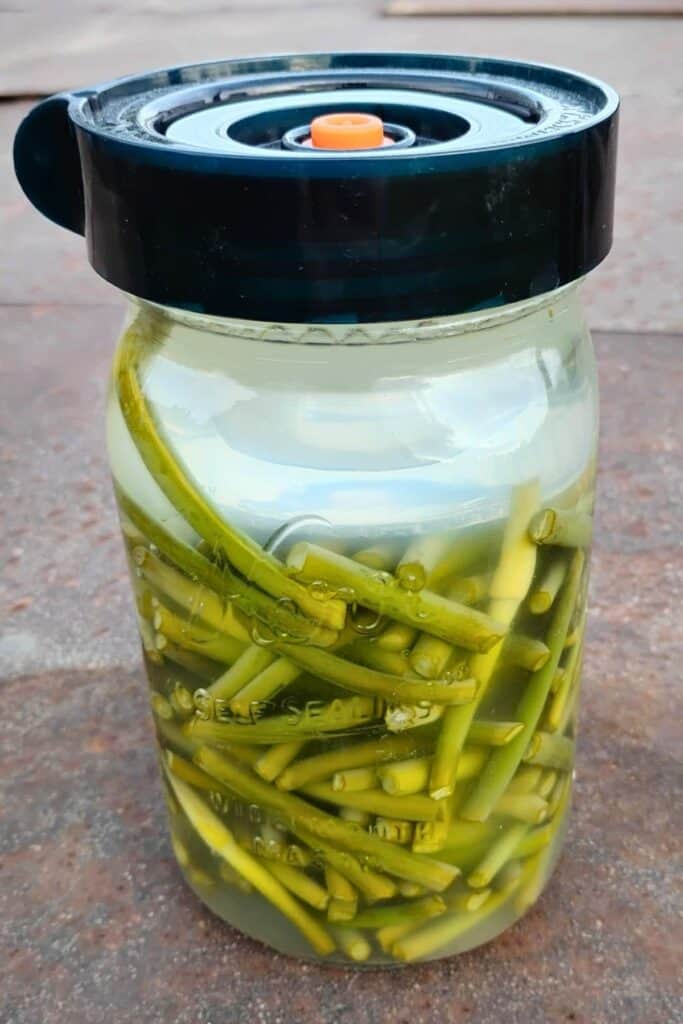
After 2-3 days, your fermentation should start to look active. Bubbles forming, maybe a bit of overflow, and a cloudy brine. The garlic scapes will take on an olive hue.
If you are impatient, you can smell and taste them now and use them if you like a very light fermentation, but if it doesn’t taste tangy yet, leave it to ferment a bit longer.
For a full fermentation, leave it alone for 3 weeks. The garlic scapes will get more acidic and have increased probiotic activity. That means more beneficial probiotics for your gut.
After 3 weeks, they can go into cold storage, but before you put them away, open the jar and smell them. They should have a pleasant tangy scent. Now taste them. If they are nicely tangy, firm, and crunchy and you like them that way, you can place a sealing lid on the jar and refrigerate them at this point.
Fermenting them for three to four weeks for a full fermentation yields the highest health benefits.
How to tell if fermented garlic scapes are Safe to eat
Fermenting is very safe, but as with anything, there is a chance that something might go wrong. If for some reason your ferment has mold in it, smells putrid or seems slimy or mushy, you don’t want to taste it. Something went awry. But it will still make great food for your compost. If it looks, feels, and smells good, it’s fine to taste and eat. You’ll know if it’s bad.
It’s very unlikely that anything will go wrong, if you followed the instructions and used clean equipment. But when you’re dealing with food, stuff can happen. Maybe your room temperature was too low or too high or your garlic scapes had been treated with pesticides. It’s always a bummer, but remember, while it can happen, it is not the norm. Don’t be discouraged and do try again.
09. Storage
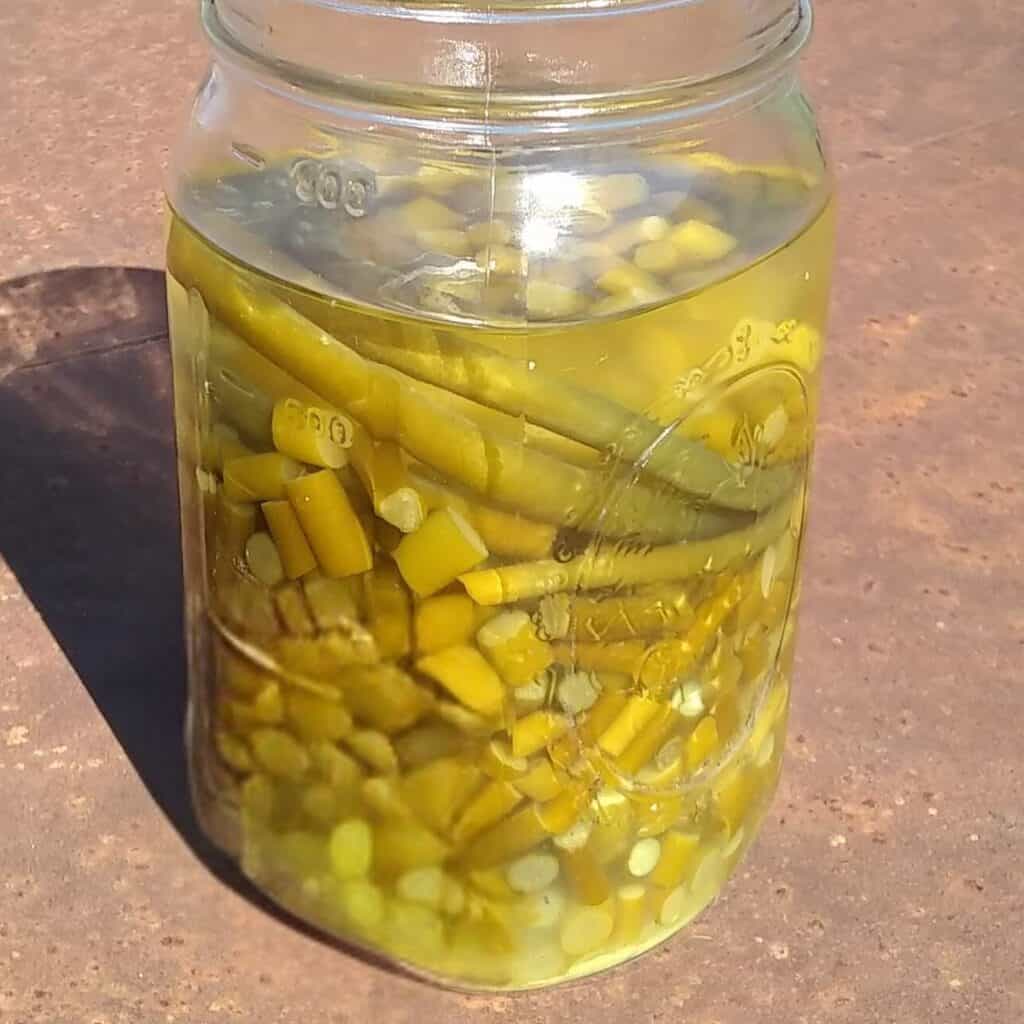
Replace your fermentation lid with a sealing lid and place the jar into the refrigerator or your root cellar. Keep it somewhere where it’s fairly cool, or it will keep fermenting actively and eventually turn soft and not very appetizing, after several months, they can become inedible.
So if you don’t plan to eat them soon, it’s best to keep them cool, under 60 degrees. This way your scapes should be good to use for at least a year or more. Use as needed.
How to Use Fermented Garlic Scapes
Use them as you would any pickled foods. They can be added to sandwiches, salads, dips or served as a side by themselves.
Fermented foods with your meals will help with the digestion of foods that are harder for your body to break down, such as cooked meats.
You can also use them in your cooked foods, but this will kill the probiotics in it.
Try processing the fermented scapes into a paste to serve as a condiment or relish for dipping or as a topping. It would go nicely with cheese on a charcuterie board.
Be sure to save the brine and drink a bit of it each day as a tonic, or use in salad dressings, dips, creamy salads like potato salad, drizzle over roasted vegetables or use in sauces, soups, or as a great tenderizing marinade for meats.
You can also use the brine as a starter for a new batch of fermented vegetables. It is great too for fermenting cooked vegetables or other foods. For example you could use it to start fermented eggs, since boiled eggs don’t have any lactobacilli on them.
As always, when you introduce a new food to your diet, be sure to start slow. Let your body adjust to fermented foods over a few weeks before you increase the quantity. Watch for allergic reactions. And check with your healthprovider, if you are pregnant, nursing or are taking medication.
Disclaimer
I am not a doctor or claim to be qualified in any way to give medical advice. I am self-taught and this article reflects just my opinions, experiences with herbs, and what I’ve learned from research and years of studying herbalism, herbs and their uses. This article is meant as an entertaining source for ideas and reference, and to encourage interest in herbalism and natural healing. It is my hope to help you get to know and appreciate herbs and their traditional uses. Please do not use any of this information to replace professional advice!
Enjoy your Fermented Garlic Scapes!
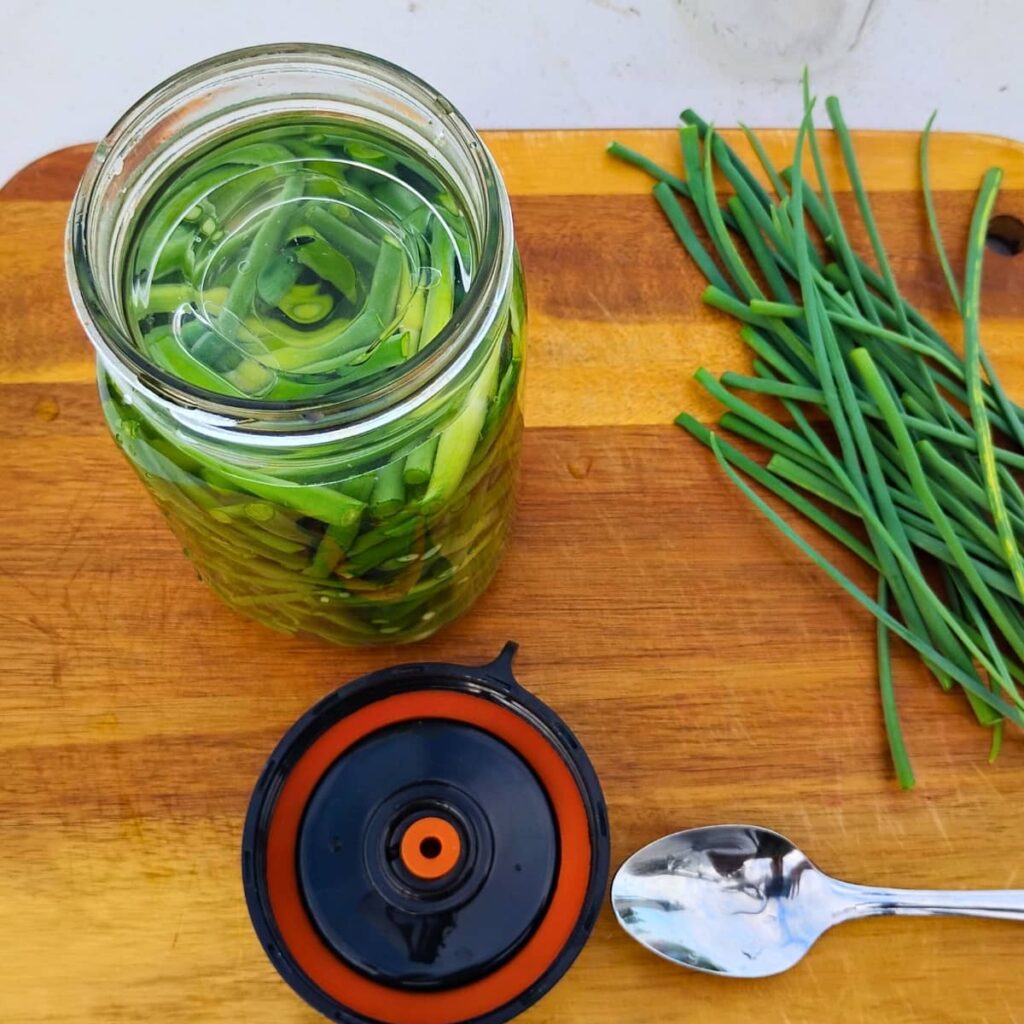
Well, that’s all there is to it! You’ll have a jar of tasty garlic scapes all ready to use in your refrigerator. They’ll be a great addition to your daily meals and a great topping on your sandwiches or burgers.
You’ll enjoy the health benefits of garlic and the added probiotic bacteria for improved gut health. And your body will get some help toward a healthier digestion. Fermented garlic scapes are delicious and you’ll do a whole lot of good for your gut, your body and overall well-being.
I’d love to hear about your favorite uses for garlic scapes and I’d love to hear about it in the comments if you get to make this! Be sure to leave me a ⭐⭐⭐⭐⭐ rating if you love this fermented garlic scapes recipe!
For more recipes like this and to not miss any uploads, sign up for my Food For Life Garden Newsletter. You’ll get recipes and tips for the homestead kitchen, garden and more.
And please don’t forget to subscribe for more great recipes and homestead tips and ideas. I’m always adding new content. Click here to get my Food For Life Garden News today so you don’t miss any new posts.
More fermenting recipes
Recipes for Garlic Scapes and Bolted Onion Greens – There is much you can do with garlic scapes and bolted onions. I’m sharing my favorite ways to use them and how to make a delicious pesto sauce.
How To Grow Garlic – What to do to get big and healthy garlic bulbs. When and how to plant and harvest.
Tabouli Salad – a delicious cold salad or meal, made gluten-free with quinoa and packed with nutrition and health benefits.
Fermented Coleslaw – A cabbage and roots medley with fabulous coloring and awesome flavor. Packs nutritious punch and probiotic diversity.
Fermented eggs – A probiotic, nutritious, delicious snack that you can keep in your refrigerator for several weeks. Try fermenting garlic scapes with your fermented eggs for great flavor!
Fermented Garlic and Honey – A powerful combination of two all-star infection and sickness fighters. Make this easy remedy today and be ready for the cold and flu season!
Fermented Garlic – Lacto-fermented garlic paste is kind of a special food. It’s the ultimate convenience food and health supplement. But besides that, it gets better as it ages. Just like a fine wine.
Fermented Chili Paste – Here is a great way to preserve your end-of-the season harvest of green peppers. This paste will last all year in your refrigerator to use as a condiment, seasoning, or topping.
Fermented Basil Paste – Keep a jar of this in your refrigerator all year, to season your italian dishes. Preserve not only the herb, but also its aroma and pungent basil flavor. It’s one of my favorite ways to preserve basil.
Fermented Cucumber Pickles – How to ferment your excess of cucumbers to enjoy all year long and with the added benefit of improving your gut health with probiotics.
Fermented vegetables – How to ferment your summer’s bounty to enjoy it all year long and with the added benefit of improving your gut health with probiotics. Learn the basic skill of fermenting any kinds of vegetables, learn about the benefits of fermentation and get the science behind it too.
Pin this post
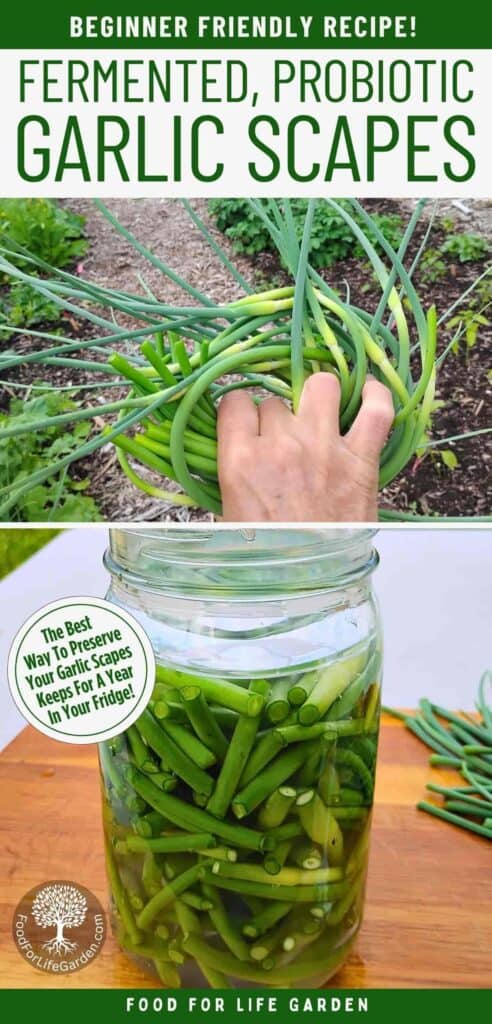
Shop this post
Wide mouth funnel
Fermentation tops
Glass fermentation weight
Airlocks
Berkey water filter
Redmond’s Real Salt
Himalayan pink salt
Celtic sea salt
Bormioli Fido Jar
Organic ingredients – get organic ingredients at the Azure Standard buyer’s club.
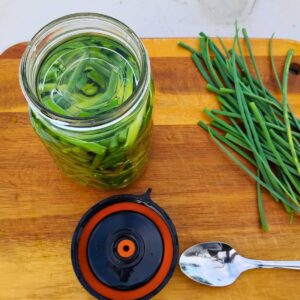
How To Make Fermented Garlic Scapes
Equipment
- 1 quart sized mason jars – One wide mouth quart jar for fermenting. You can also use a hinged top Fido jar.
- 1 pint or quart mason jar – for mixing your brine.
- Fermentation weight – I recommend you use a glass fermentation weight. They are made for this job and do it well! If you don't have one, use a cleaned and boiled rock, a baggie filled with brine, or some other food-save, non-corrosive item you have on hand, that will keep the ingredients submerged in the brine.
- Fermentation Lid – If you're using a standard wide mouth mason jar, use a fermentation top or airlock lid. It makes fermentation so easy and maintenance-free. Or you can either just use a cloth, secured with a rubber band, or a 2-piece canning lid, or a plastic lid that is made to fit the jar.
- Chopping board and knife
- Wide mouth funnel (optional) – Not necessary, but very helpful.
Ingredients
- Garlic scapes
- Sea salt – I recommend Redmond's Real Salt, Himalayan pink salt, or Celtic sea salt. Be watchful of additives. Table salt and even some brands of sea salt and kosher salt can contain additives, so check the box label.
- Filtered water – Avoid chlorinated water!
- Pickling Spices (optional) – Use a traditional pickling spice mix, about a tablespoon per quart. Or just add what you have, coriander, black pepper corn, dill seed, mustard seed, hot pepper flakes, sliced turmeric or ginger, or fresh dill sprigs.
Instructions
- Prepare the Garlic Scapes: First, remove the fibrous tips from your scapes, cut them off just above the flower bulb. You can remove the flower bulb too if you prefer, they can get soft during fermentation.
- Slice the scapes, cut them into sections or leave them whole.
- Pack the pieces into your mason jar. It should be near full, to about an inch below the rim. They will compress a bit more once you add your weight.
- Make the Brine: Add the salt to the water in a separate jar. You'll probably need just over a pint of it. Stir or shake well to dissolve the salt.
- Pour the brine over the garlic scapes. They need to be submerged. If you have leftover brine, you can save it for another ferment or use it in your next soup or bread dough instead of salt.
- Weigh down the Ingredients: Place a glass fermentation weight on your garlic scapes. If you don't have one, you can use a boiled, clean rock, a baggie filled with marbles or brine, or some other food-save, non-corrosive item you have on hand.
- Seal the Jar: If you are using a mason jar, I highly recommend a fermentation lid. They are self venting and are so easy to use. No maintenance necessary. If you don't have one, you can use a 2-piece mason jar lid. But you'll need to remember to burp it once a day. Or you can try to screw the band on very loose, so it can self vent. But keep an eye on the fermentation to see if a yeast layer forms on top, which is harmless, but should be skimmed off or it can give your fermentation an "off" flavor.
- Fermentation: Place your jar in a dark place with a bowl under it, at about 70-85 ℉. This temperature should be maintained over the course of the next 3 weeks. Some fluctuation is fine, but avoid prolonged lower or higher temperatures. For more details on fermenting and why this is important, visit my lacto-fermented vegetables page, a beginner course on fermenting.
- Check your fermentation: After 2-3 days, your fermentation should start to look active. Bubbles are forming, maybe a bit of overflow, and a cloudy brine. The garlic scapes will start to take on an olive color.If you are impatient, you can smell and taste them now and use them if you prefer a light fermentation. For a full fermentation, leave it alone for 3 weeks. They will get more acidic and have increased probiotic activity. That means more probiotics for your gut.
- Time to Store: After 3 weeks, they can go into cold storage, but before you put them away, open the jar and smell them. They should have a pleasant tangy scent and be firm and crunchy. Now taste them. If they are nicely tangy and you like them that way, you can place a sealing lid on the jar and refrigerate them at this point.Fermenting them for three to four weeks for a full fermentation yields the highest health benefits.
- Is it Safe To Eat? Fermenting is very safe, but as with anything, there is a chance that something goes wrong. If for some reason your ferment has mold in it, smells putrid or seems slimy or mushy, you don't want to taste it. Something went awry. But it will still make great food for your compost. If it looks, feels, and smells good, it's fine to taste and eat. You'll know if it's bad.It's very unlikely that anything will go wrong, if you followed the instructions and used clean equipment. But when you're dealing with food, stuff can happen. Maybe your temperature was too low or too high or your garlic scapes had been treated with pesticides. It's always a bummer, but remember, while it can happen, it is not the norm. Don't be discouraged and do try again.
- Long term storage: Replace your fermentation lid with a standard sealing lid. I like to use the standard flat metal piece of canning lids and cover it with a white plastic canning jar lid from Walmart. This makes a great seal and the plastic won't corrode. Now place the jar into the refrigerator or your root cellar. Keep it somewhere where it's fairly cool, or it will keep fermenting and eventually turn soft and not very appetizing, and eventually it will become inedible. This can take a many months at room temperature, but if you don't plan to eat them soon, it's best to keep them cool, under 60 degrees. This way your scapes should be good to use for at least a year or more. Use as needed.

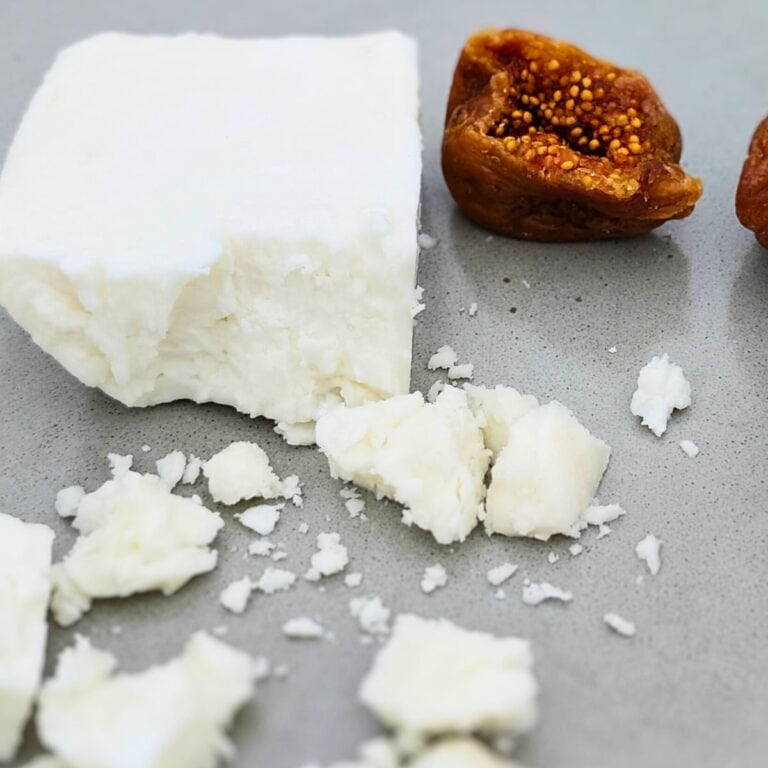
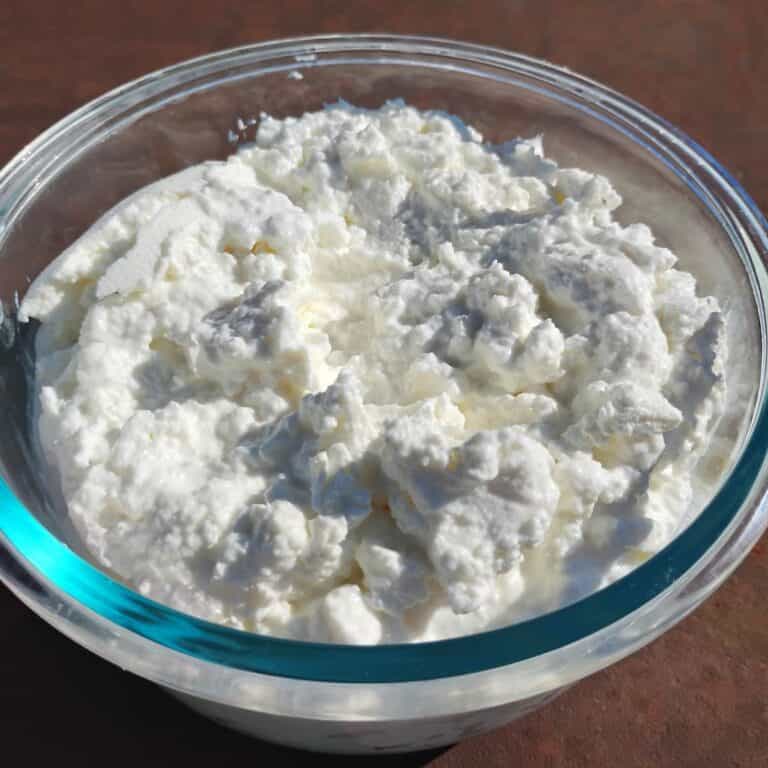
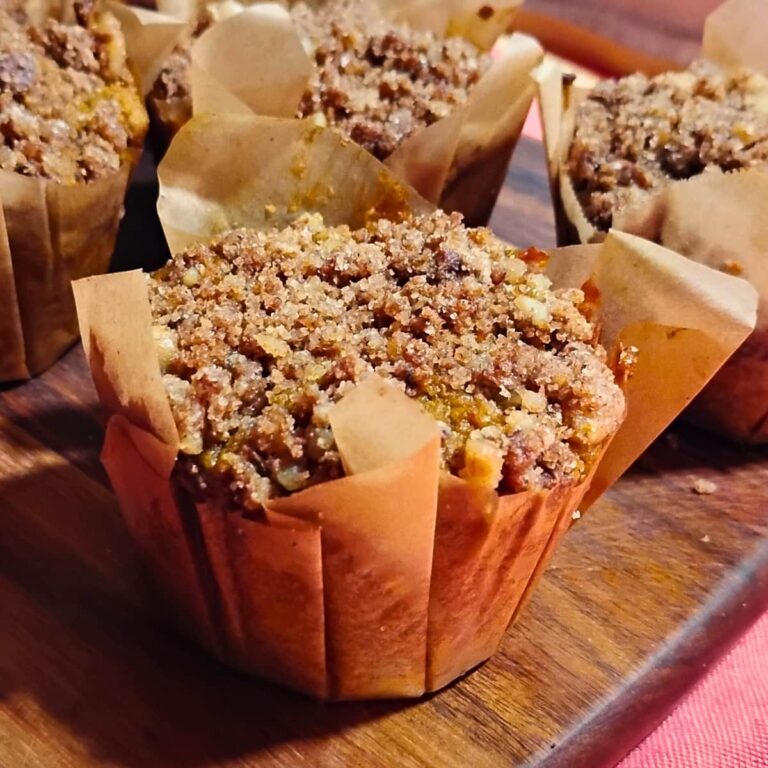
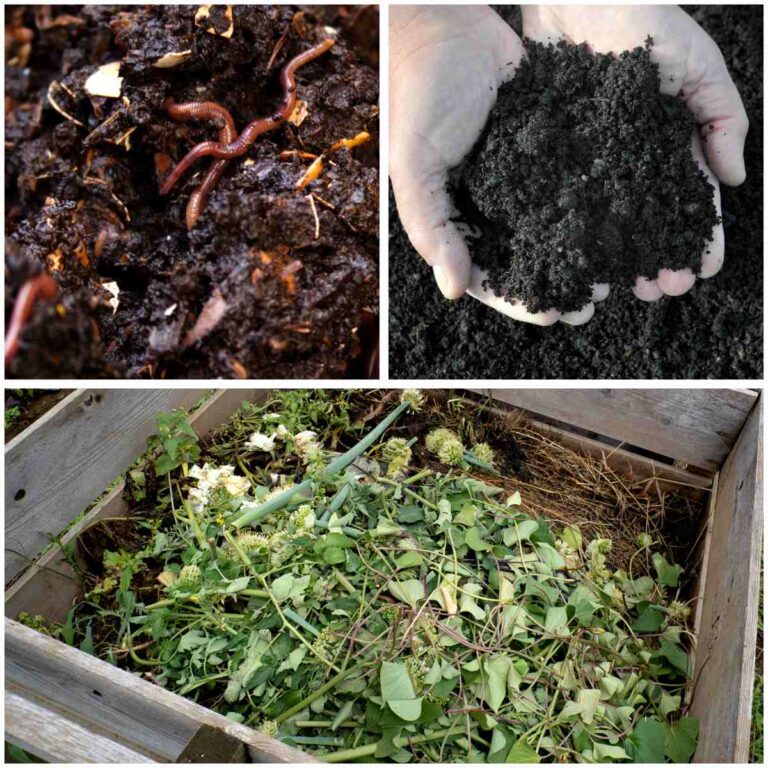
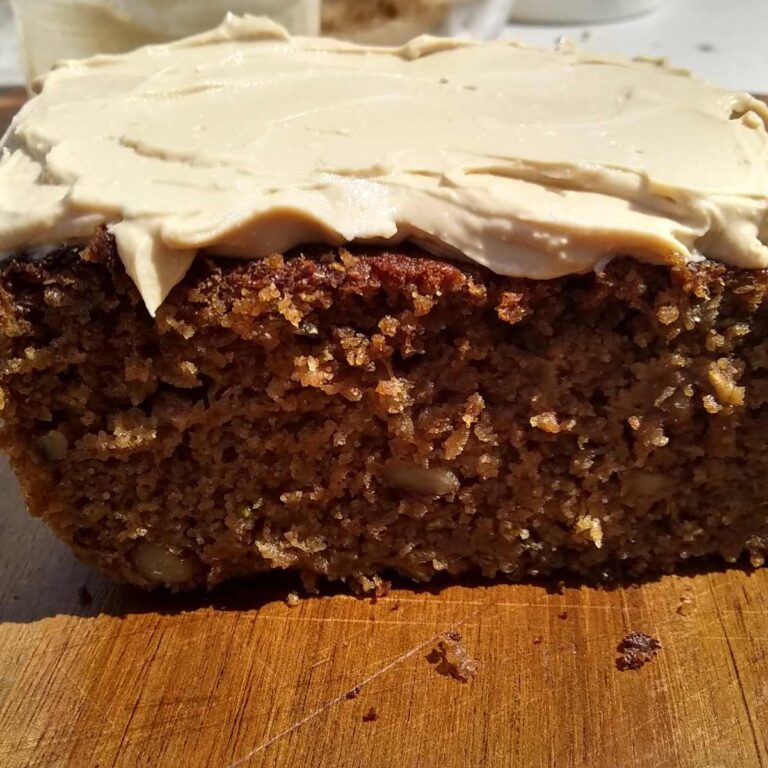
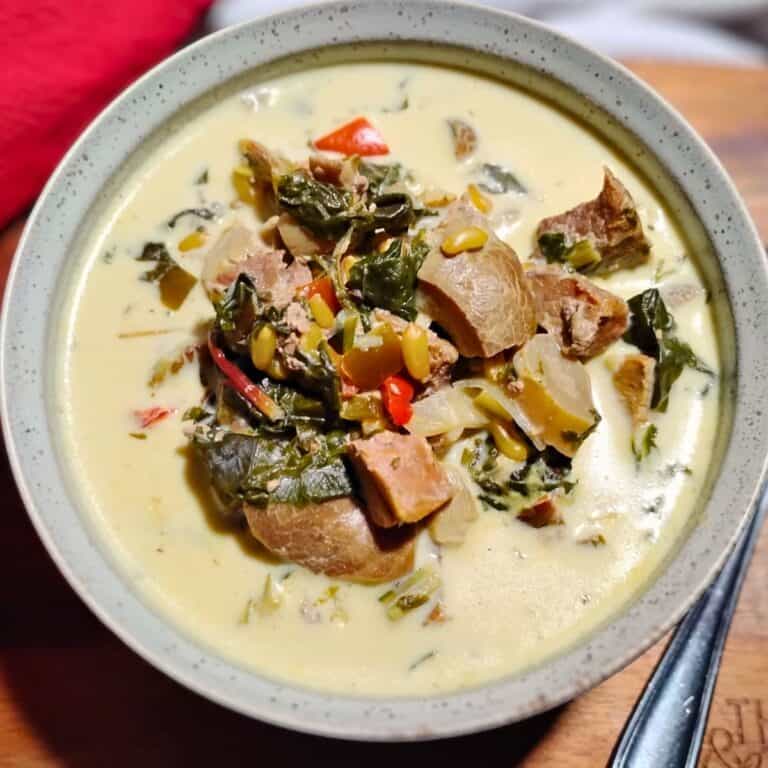
Try this recipe for easy preservation of garlic scapes! It’s quick, easy, and so tasty on your sandwiches or in your salads all year. With a mild garlicky and tangy flavor, it’s delicious and healthy as a snack too. Please ask in the comments here if you have questions. I’ll be back to answer.
We love Garlic Scapes in recipes or pestos. Fermented scapes sound delicious!
That’s great, Hayley, thank you so much for your hanging out on my page!
Very thorough and interesting as usual!
Thank you, Ophelie, I’m glad you found this interesting!😊
Your posts always make me yearn for a garden again! I feel misplaced living in the city. Now all I can think about is potato salad with garlic scapes.. 🙃 I wonder if it works in egg salad, in place of pickled celery!
Hey Sarah! I totally understand. I was in the city for a while and tried to garden in pots, but it’s not the same. I think fermented garlic scapes would work great in egg salad. It adds a little crunch and that nice tangy fermented flavor. A dash of the brine added to the salad might be nice as well, that is what I do with potato salad. Hope you get to garden again some day!
Until recently, I didn’t know what garlic scapes were, even though I grow garlic in my garden. I love this healthy option for them! Thank you for sharing all these great tips.